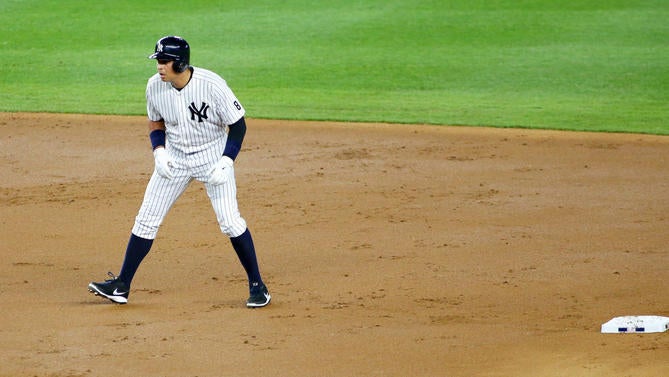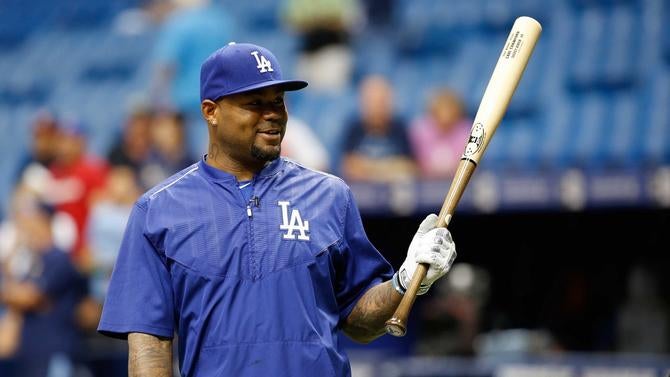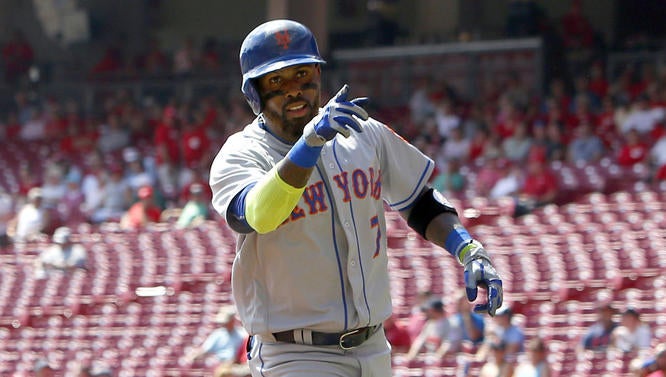MLB's financial parity means teams are more willing to admit bad contract mistakes
Teams have more money than ever before, which means they're more willing to release bad players

Right now, the game of baseball is healthier financially than it's ever been. League revenue reportedly increased $500 million last season to approximately $9.5 billion overall. There's a good chance revenue will top $10 billion in 2016, and there's no reason to think it'll go down in the coming years.
The days of baseball drawing most of its revenue from ticket sales and concessions are long gone. Revenues are sky-high right now thanks to monster broadcasting contracts, merchandise sales, and the media juggernaut known as MLB Advanced Media. Millions purchase MLB.tv and the indispensable MLB At-Bat app each year.
Coming into the season, 26 of the 30 clubs had a payroll of at least $100 million. Five years ago it was only 15 of the 30 clubs. Traditional small market teams like the Royals ($143 million) and Padres ($126 million) opened 2016 with payrolls that not too long ago were only associated with the Yankees and Red Sox. The Diamondbacks of all teams landed Zack Greinke with a record contract this past winter.

The record revenue and the league's revenue sharing policy, which essentially takes money from rich teams and gives it to poor teams, has led to the kind of parity MLB has been striving to create the last two decades. More teams are in the race and more fans are interested longer into the season. It's great for the game.
Because teams are now on a more even footing financially -- there are still superpowers like the Yankees and Dodgers, but the gap isn't as large as it once was -- clubs are more willing to admit their mistakes and eat bad contracts. We've seen it several times this year. Unproductive players have been flat out released.
Check out the list of players who were released this season despite being under contract through at least 2017. These teams would rather pay these players to not be on the roster this year and next.
- Billy Butler, Athletics: Owed approximately $11.5 million through 2017.
- Carl Crawford, Dodgers: Owed approximately $35 million through 2017.
- Alex Guerrero, Dodgers: Owed approximately $11.25 million through 2017.
- Omar Infante, Royals: Owed approximately $12 million through 2017.
- Hector Olivera, Padres: Owed approximately $32.5 million by San Diego through 2020.
- Jose Reyes: Owned approximately $38 million through 2017.
- Alex Rodriguez, Yankees: Owed approximately $28 million through 2017.
That list doesn't include Josh Hamilton, who was released by the Rangers last month. Texas only owes him $2 million this season plus another $2 million next season. The Angels are on the hook for the remainder of his $28.14 million salaries this year and next. Anaheim ate all that money to make him go away.
Including what the Rangers owe Hamilton, that's over $171 million in dead money on MLB payrolls through at least next season. Other players like Rusney Castillo and Allen Craig of the Red Sox have been outrighted to Triple-A, meaning they're no longer on the 40-man roster but are still in the organization. Boston deemed someone else more worthy of that 40-man roster roster spot.
Now, is this good for baseball, teams releasing players a full year before their contract expires? It's complicated but I think the answer is yes, for a few reasons.
1. Clubs are not allowing themselves to be hamstrung

In the past, owners would be very hesitant to release a player owed significant money. They're rather hang onto the guy and hope he turns things around at some point, especially if they're signed long-term. That meant a worse product on the field. The player was on the roster because of his contract, not because he deserved a spot.
Now that revenues are up and owners are more willing to move from bad contracts, they're improving their roster by replacing an unproductive player. Crawford being released gave Andrew Toles an opportunity. Aaron Judge was called up after A-Rod was released. Trevor Story became the no-doubt shortstop of the present and future once the Rockies cut ties with Reyes.
MLB is so hyper-competitive nowadays that anything a team can do to improve their odds is worth it. If that means releasing an unproductive player owed a lot of money, so be it. These moves help improve the competitive balance around the league, even if only a little bit.
2. The players are still getting paid
MLB is not the NFL. Almost all contracts are fully guaranteed in baseball. The only exceptions are players who sign one-year contracts in their pre-arbitration and arbitration years, and those deals become guaranteed on Opening Day. Only during spring training can the team release those players and not be responsible for the full salary.
Crawford, A-Rod, Reyes and everyone else listed above will still get paid every dime left on their contracts. Remember, no one forced the teams to sign these contracts. They were negotiated. Non-guaranteed contracts don't hold the team accountable and don't force them to make better decisions. The stakes are much higher this way.
3. The player can look for a better opportunity

Both Reyes and Butler have since signed with other teams after being released. They did not fit with their former teams, but another club had a spot for them. No player wants to go home and sit on their couch while collecting the remainder of their contract. These guys are competitive and they want to play, if not with their current team, then elsewhere.
Once a player is released, another team is free to sign him for the pro-rated portion of the league minimum. That's it. The player becomes cheap labor for the other 29 clubs and that only increases his odds of getting signed at some point. Getting released means things have gone pretty bad for the player and his former team. It's also an opportunity for a new beginning elsewhere, however.
The record revenue is great for baseball for obvious reasons. It's also a bit of a Catch-22 at the team level. More revenue means larger contracts, and that will inevitably lead to larger mistakes. Players aren't any less prone to decline just because they're getting paid more money.
This year already we've seen small market teams like the A's, Royals, and Padres release an expensive player who they simply did not believe have much to offer. These sort of moves may increase in number in the future. It looks bad on the surface but is actually a good thing for baseball. Teams are putting their best roster on the field and the player is getting out of a toxic situation.

















